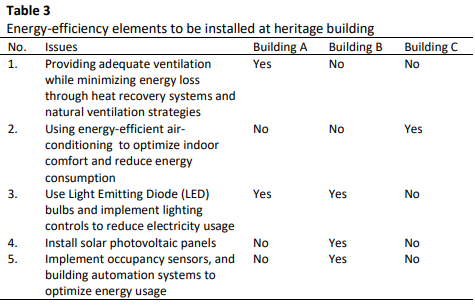Assessing Components of Energy-Efficient Retrofitting at Heritage Buildings in Buffer Zone of Penang: Aiming for Net-Zero Energy Building Status
DOI:
https://doi.org/10.37934/ard.119.1.915Keywords:
Net zero energy building, energy-efficiency, heritage buildings, preservationAbstract
Various components of successful energy efficient renovations in heritage buildings have been identified to create heritage buildings that aim to become Net Zero Energy Buildings (NZEB). Heritage buildings, with their historical and architectural significance, present unique challenges in achieving NZEB status while maintaining their integrity. Therefore, proactive steps must be taken to preserve historic buildings by implementing activities that can contribute to energy efficiency retrofitting at heritage buildings. The aim of this research was to assess the components of energy-efficient retrofitting at case study (heritage buildings) that can strike a balance between energy efficiency improvements and the preservation of the historical and architectural heritage buildings in the buffer zone, Penang. During assessment, there are five components that were assessed including ventilation, air conditioning, lighting, solar photovoltaic and smart control. This study makes full use of qualitative methods by integrating insights from observation and detailed case studies. As a result from assessment and observation, it was found that all buildings required to implement ventilation (case study 1), lighting (case study 1), solar photovoltaic (case study 2), smart control (case study 2) and air conditioning system (case study 3). As a proactive measure, early exposure should be given in relation to NZEB and should be applied to the community especially among students of higher education institutions so that they can care for and preserve historic buildings and the environment for the future generation and generate the national economy in various sectors.
Downloads























